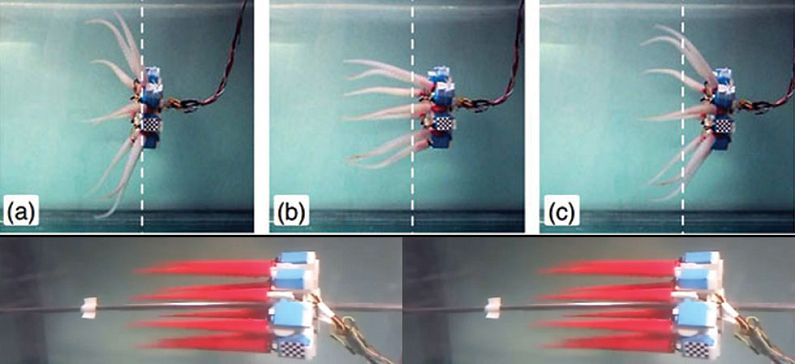
Greek scientists create robot octopus
Most octopuses get around primarily by crawling along the seafloor. And if they need to get somewhere in a hurry, they can employ their funnels to jet away like their pelagic cousins, squid. Researchers in Greece, however, have made a robot octopus that can propel itself through the water using only its eight arms.
Their prototype, announced earlier this summer, has mastered a handful of different swim strokes—including some even the octopus itself can’t pull off.
The robot octopus, initially outfitted with stiff limbs, can move all of its arms in and out in unison, slowly propelling the body along in the water. It can also perform a straight-armed technique in which each arm moves in and out independently. This pattern—referred to as “sculling”—though creepy and extra artificial looking, produces a fluid and steady motion that is very much unlike the discontinuous movement of the real octopus. Finally, when outfitted with flexible arms, the oct’bot elegantly executes a very cephalopodian swim. In this style of swimming, the robot undulates its arms out together and then pulling them back in—very much like a real octopus or squid.
The team behind these eight-armed aquabotics is from the Foundation for Research and Technology in Hellas. They presented their work in June at the IEEE International Conference on Robotics and Automation in Karlsruhe, Germany. They are working as part of the Octopus Integrating Project consortium, which aims to create an entirely soft-bodied octo-bot that mimics the locomotion, abilities and looks of an actual octopus. Soon, for example, the group hopes push forward and experiment with additional swimming styles, as well as models of the extendable web that connects real octopuses’ upper arms.
Such an unusual robot could be useful in search-and-rescue operations, deep-sea exploration and in furthering the field of soft robotics. Waiting for a bot to arrive conveyed on arm power alone—whether sculling or swimming sidestroke—might be tedious, however. So the research group also plans to eventually outfit the bot with a jet-propulsion system similar to that of the octopus’. So, although it might not yet be a precisely faithful copy of the real octopus, it approaches the general idea—in broad strokes, at least.
Watch the video below:







